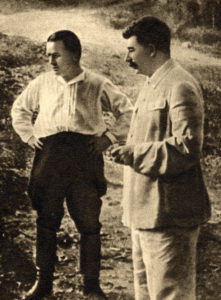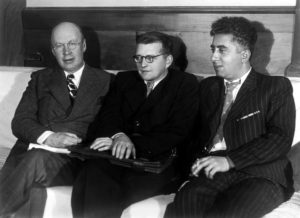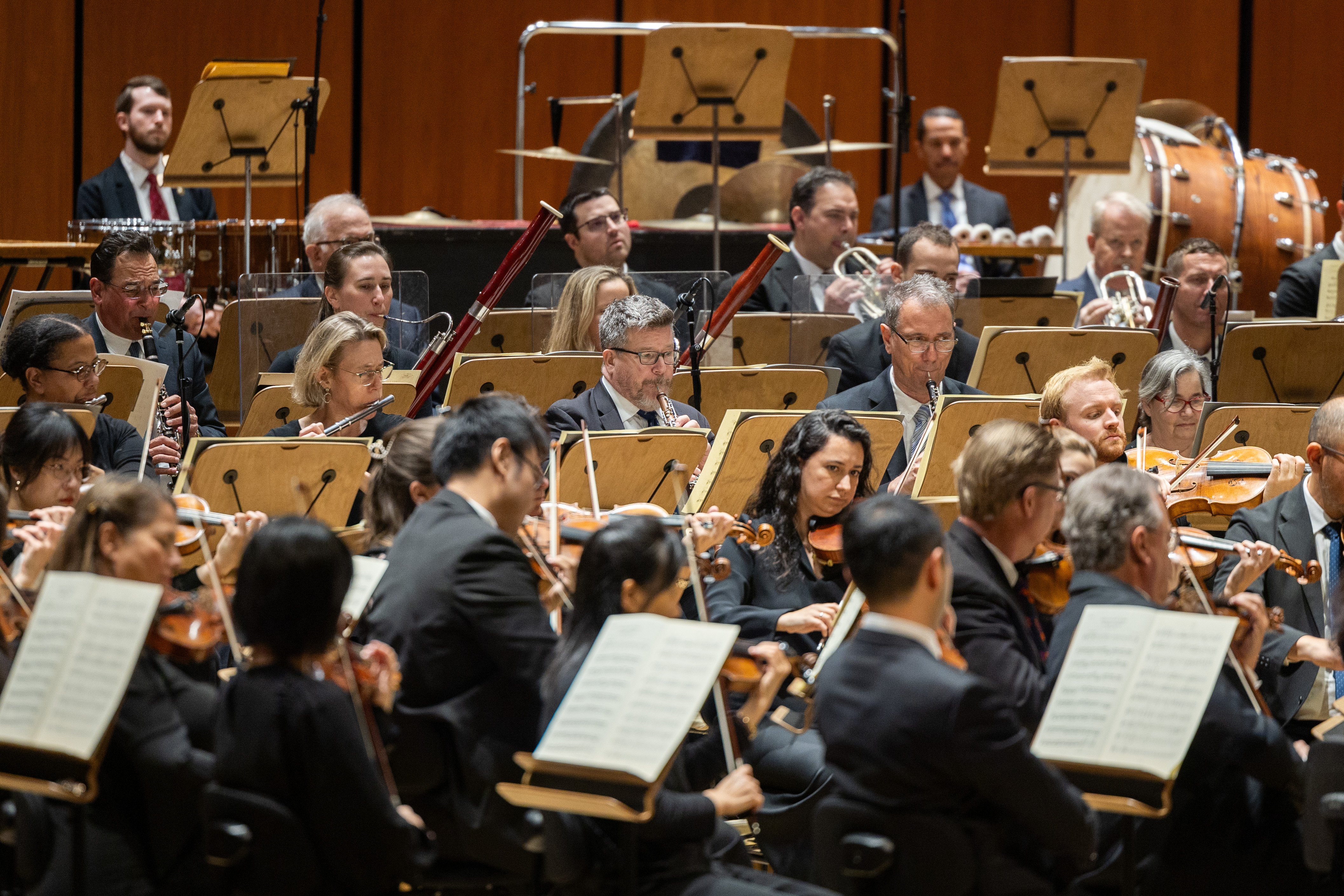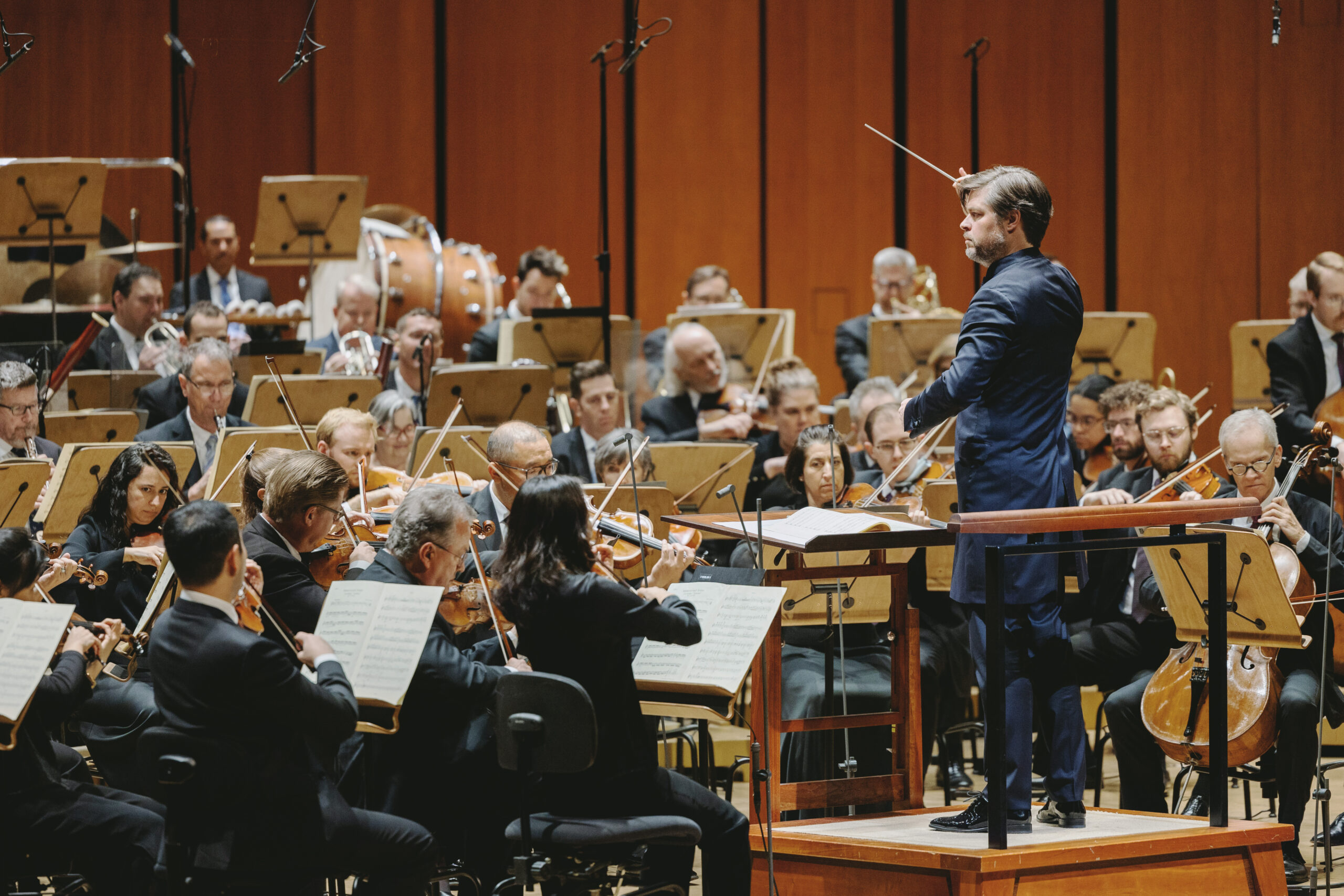
February 12, 2018
Fighting the Barbarian Artist: Shostakovich’s Symphony No. 5
In January 1934, Dmitri Shostakovich scored one of the biggest triumphs of his career with the premiere of Lady Macbeth of the Mtsensk District, a work official critics hailed as the first great Soviet opera. Based on a nineteenth-century novella by Leskov, it follows the misadventures of Katerina, the illiterate wife of a well-to-do country merchant who is driven to murder in order to be with her handsome but unworthy lover, the laborer Sergei. By turns satirical and tragic, Lady Macbeth explored themes of oppression with a potent combination of sex, violence and some truly beautiful music that played to full houses for two years.

Then on January 26, 1936, Stalin went to see it. Two days later, on page 3 of Pravda (“Truth”—the newspaper that continues to serve as the official mouthpiece of the Russian Communist Party to this day), Shostakovich found an anonymous review of Lady Macbeth headlined “Muddle Instead of Music.” One representative quote declared that the opera “tickles the perverted tastes of the bourgeoisie with its fidgety, screaming, neurotic music…”
Given its diction and prudish attitude, some speculate that the review was written by Stalin himself (or at least by someone trying to sound like Stalin). Stalin likely read and approved it before it was published, in any case. Though it is possible that Stalin’s visit to the opera was spontaneous, some evidence suggests that it was orchestrated by Shostakovich’s bureaucratic enemies; the composer may have unwittingly become a pawn in a petty power struggle between musical apparatchiks.

Shostakovich’s denunciation must also be viewed in the wider context of Stalin’s purges, which began at the end of 1934 in response to the assassination of the popular political figure Sergei Kirov (an assassination which many historians now believe was orchestrated by Stalin himself). Though the purges began with the elimination of Communist Party leaders whose loyalty to Stalin was questionable, it later spread to every stratum of society. According to official Soviet records, over 681,692 people would be executed as part of the purges (although the real number could be double that). Among those who were executed or deported to Siberian labor camps would be a number of Shostakovich’s friends and colleagues.
Shostakovich’s denunciation thus might have had nothing to do with his music; indeed, nine days after the “Muddle” article, another review appeared that condemned Shostakovich’s ballet The Limpid Stream. The ballet had a trite story designed to please party ideologues and a mostly fluffy, dissonance-free score that couldn’t have been more different from that of Lady Macbeth. The attacks on Shostakovich may thus have been the party’s way of sending a message to the musical community: if the star composer Shostakovich was not safe, then no one was.
Shostakovich, however, merely knew that he was in danger. He began obsessively collecting every newspaper article that criticized him. Though a few bravely stood up for him at first, other prominent musical figures soon began echoing the party line. The writer Maxim Gorky, a hero of the revolution and a personal friend of Stalin’s, wrote to Stalin in Shostakovich’s defense. Three months later, Gorky died under mysterious circumstances.
The crisis could not have come at a worse time for Shostakovich, as he and his wife were expecting the birth of their first child. Performances of his music soon ceased and his income plummeted. At the last minute, he cancelled the premiere of his Fourth Symphony, a complex, Mahlerian work that ended pianissimo in a minor key. He likely feared that this work would fail to please the Communist party’s aestheticians, who demanded that all art promote the official ideology and glorify the state. Grandeur, heroism, and happy endings were nonnegotiable. With public figures disappearing every day, Shostakovich knew that to survive, he would have to compose a work that appeared to give them what they wanted. That work would be his Fifth Symphony.
The Music
The symphony begins with a stark motto in the strings that leads to a bleak, wandering first theme in the violins:
https://www.youtube.com/watch?v=envtyJfqSPY&t=7s
This 1938 recording features conductor Yevgeny Mravinsky, who conducted the premiere.
This fragmented melody unfolds slowly and aimlessly in gray, muted orchestral colors with occasional interjections from the opening motto. Gradually more instruments enter as the music transitions to a new theme, which appears above a pulsing accompaniment. Despite glimmers of warmth, this second theme extends the atmosphere of profound melancholy created by the first.

After this theme dies away, the music begins to accelerate with a short-short-long rhythm in the piano and pizzicato lower strings. Above it, the first theme takes on a more menacing guise in the horns. The music becomes faster and faster, as if spiraling out of control, until the first theme returns as a grotesque, militaristic march. The music then continues to accelerate, leading to the return of the opening motto in an extended passage of terror that climaxes with the first theme in a brutal, condensed form. After this violent passage, the second theme returns as a duet between a solo flute and horn. In the coda based on an inversion of the first theme, the music becomes weaker and weaker, ending with the haunting sound of the celesta.
After a brusque opening in the cellos and basses, the second movement launches into a parody of a waltz, featuring “wrong” note harmonies, unexpected turns and grotesque circus music. Here Shostakovich’s talent for irony is on full display: nothing is as it appears. This movement features a multiplicity of instrumental colors, and it is easy to imagine different instruments caricaturing various types from Soviet society, some sincere, some sarcastic and some coercive.
Composed in only three days, the third movement contains some of Shostakovich’s most affecting music; Shostakovich scholar Michael Mishra relates that, “What so moved the Leningrad audience, many of them to tears, at the premiere was this simple, naked outpouring of tragic meditation and lyricism” at a time when artistic expressions of grief were effectively banned. Many of those in the audience would have known people who had disappeared in the purges, people whose loss they were unable to mourn publicly. Featuring divisi strings, the movement slowly builds to a powerful, cathartic climax before dying away.
The finale roars into being with fiery woodwind trills before a bombastic theme appears in the trombones. The first four notes of the theme were taken from an unpublished song Shostakovich had recently written to words by Pushkin:
With sleepy brush the barbarian artist
The master’s painting blackens;
And thoughtlessly his wicked drawing
Over it he is daubing.
But in years the foreign colors
Peal off, an aged layer:
The work of genius is ‘gain before us,
With former beauty out it comes.
Thus my failings vanish too
From my wearied soul,
And again within it visions rise,
Of my early purer days.
The notes are the same ones used to set the words “a barbarian artist,” which suggests that this theme symbolizes Stalin himself. The music races ahead relentlessly, building to a mock-celebratory theme that quickly disintegrates. This second theme then reemerges as a poignant horn solo, which is followed by a passage for strings that sounds choked by tears. The music becomes softer and softer as the violins take up a gently rocking figure that accompanied the words of the last stanza of Pushkin’s poem. The “barbarian artist” theme then returns softly, accompanied by timpani and snare drum. The theme becomes the basis for a passage that gradually builds to a violent episode punctuated by blows from the bass drum. Finally something snaps, and the music breaks into a hollow, D major apotheosis of the “barbarian artist” theme with pounding timpani.
The Leningrad premiere was an unforgettable experience for all who attended; the applause lasted over half an hour, causing Shostakovich’s friends to caution him against taking too many bows, lest his success be seen as a demonstration. The state critics, who knew nothing of the symphony’s connection to Pushkin’s poem, ironically hailed the symphony as “A work of such philosophical depth and emotional force [as] could only be created here in the USSR.” Shostakovich had given them their forced happy ending, a secret testament to the horrors of life under Stalin. He was back in the party’s good graces—for the time being.
Music Director Andrés Orozco-Estrada conducts Shostakovich’s Symphony No. 5 at our European Tour Preview Concerts with Hilary Hahn on February 23, 24 & 25. Get tickets and more information at houstonsymphony.org.






